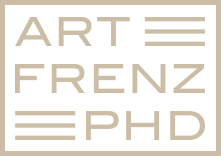 As graduate students in clinical psychology in the 1980’s at Syracuse University, my colleagues and I were introduced to the scientist-practitioner model of training. The model was designed to train clinical psychologists to be competent as scientists—able to read, understand and conduct scientific research, as well as practitioners—skilled in the art of psychology practice, especially psychotherapy. The model focuses on the blend, balance and interactive relationship between the science and the art of clinical psychology.
As graduate students in clinical psychology in the 1980’s at Syracuse University, my colleagues and I were introduced to the scientist-practitioner model of training. The model was designed to train clinical psychologists to be competent as scientists—able to read, understand and conduct scientific research, as well as practitioners—skilled in the art of psychology practice, especially psychotherapy. The model focuses on the blend, balance and interactive relationship between the science and the art of clinical psychology.
This dynamic relationship between science and art applies not only to clinical psychology, but perhaps to any endeavor from making a pizza to teaching third grade to conducting brain surgery. The Olympic ice dancer is judged based upon his or her technical execution as well as artistic expression. The American Idol hopeful is expected to sing in tune, and also with emotion. Focusing too much on the scientific side may yield a performance that is technically accurate but not that appealing or emotionally engaging. Weighing too heavily on the artistic component may produce a performance that looks and feels good but has little substance.
No pain, no gain
Each component has its own challenges. The scientific piece often comes down to basic hard work. There are rudimentary building blocks that need to be learned and mastered, and this requires endless practice and repetition despite feelings of drudgery and monotony. The pianist practices the scales and the ballet dancer repeats the plie` and releve` over and over, year after year. This involves a certain going against oneself and being obedient to the instruction. It’s an exercise in self-discipline and perseverance and is often not fun. But it’s hard to get good at anything without it.
Mastering the artistic element involves a different set of challenges. Here the student needs to learn how and when to let go of technique and to act more spontaneously. Now that the fundamentals have been studied and learned, there can be less adherence to them. There is more trusting of oneself to take the next step based upon how things feel rather than what the protocol dictates. This is how we develop a sense of intuition and learn to improvise.
For some, this can be anxiety provoking as we might fear making a mistake or being exposed.
Do your homework first
All of this applies to good mental health practice as well. Whether we’re trying to learn how to be more relaxed, less depressed, better parents, better spouses or better workers, there are fundamental skills—such as relaxation and mindfulness techniques, revising irrational belief systems, setting limits, assertive communication—which need to be learned and practiced. When these basic skills are rehearsed and become familiar, we can then implement them more smoothly and efficiently and with our own personal style.
The interplay between the inner scientist and the inner artist is ultimately the key. The two voices strive for a balance, but not a balance that is achieved and set in place once and for all. Rather, it’s a living, moving, tumbling balance where each voice has a chance to lead sometimes and to follow at others. In this way, the scientist learns from the artist and the artist from the scientist as they roll forward.
Art Frenz, Ph.D.
Image courtesy of sattva / FreeDigitalPhotos.net
